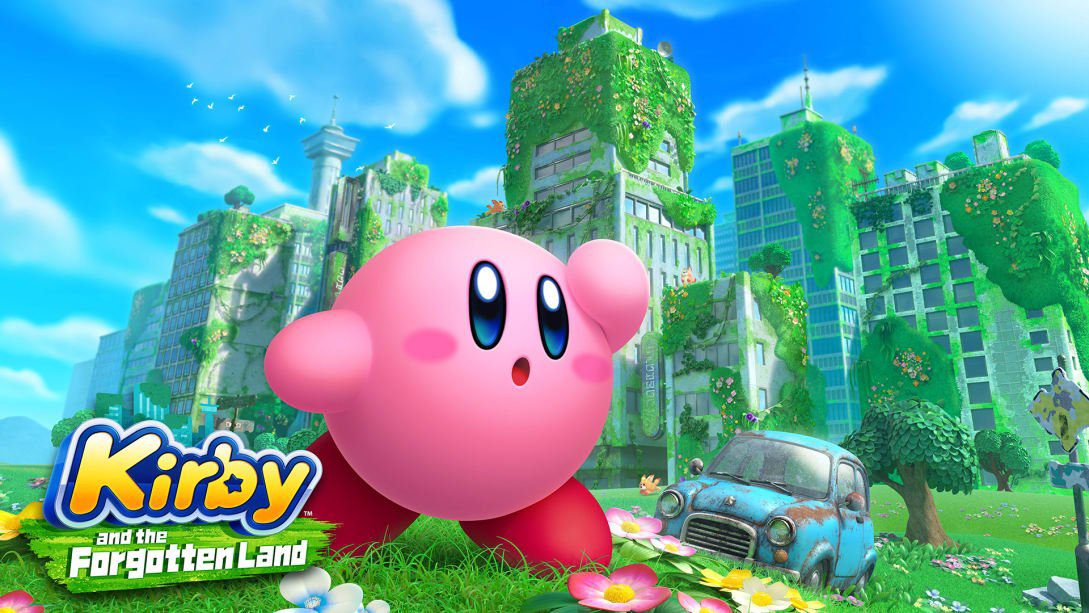
It’s not often that a legacy video game series makes a huge jump to 3D after decades of side-scrolling adventures. In fact, as I’m writing this review, it’s been exactly 30 long years since Kirby’s Dream Land released in April 1992 for the Game Boy. Finally, after all this time, following the grand celebration of the pink puffball’s legacy that was Kirby Star Allies, the series is ready to begin again.
Of course, just because it’s changing doesn’t mean that it’s necessarily improving, which is why I am here today to answer the question bigger than Kirby’s appetite: can this series work in 3D?
Now, Kirby has technically adventured in 3D before, in the 3DS eShop exclusive Kirby’s Blowout Blast. However, at $6.99 this was closer to a short tech demo than a revolutionary title, with simple level design and no new enemies. Kirby and the Forgotten Land, however, is closer to the Super Mario Odyssey of the series (although still not quite). The two games begin similarly, with both protagonists waking up in a mysterious new land. In Kirby’s case, after being pulled into a dimensional portal sucking up everything in dreamland, he finds himself on a small beach facing into a jungle, which soon turns into a sprawling… abandoned metropolis?? Yup, this ain’t your typical green-greens. Each of the different environments in the game carry some version of this theme, which heavily reflects a post-apocalyptic Earth, and serves well to separate the game from its predecessors while also introducing an intriguing environment that you will continually be pondering.
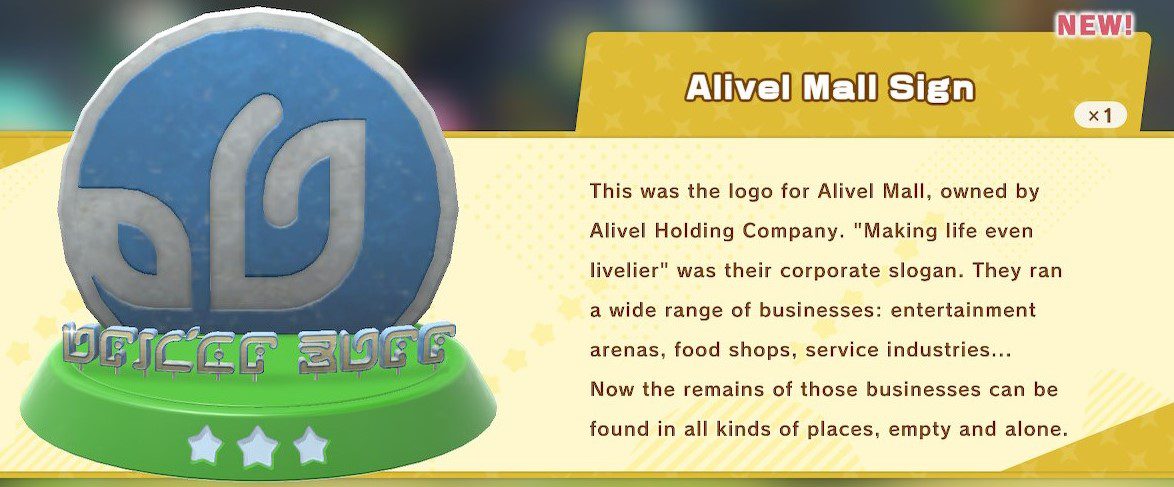
Some of these collectible figurines offer an insight into the world that once was.
In this mysterious forgotten land, the beast pack rules the place, and they are capturing every cute little waddle-dee in sight, which is more than enough reason to be suspicious of them. Kirby meets up with a new cute little friend known as Elifin, which fans of the series have long since adapted to distrust off the bat. Whether he actually has a sinister background or is really a faithful ally, well, play the game to find out. >:)
All of this is complemented by relatively open level design, which I would describe as slightly more freeing than in Super Mario 3D World stages. You are going in a linear path most of the time, but it’s accompanied by the occasional branching path and plenty of secrets. There are also several optional challenges to complete for each level, such as beating a boss without taking damage or eating all 3 hidden food items in level. These are for the most part implemented pretty well but the occasional unintuitive task requiring several replays of the level along with the logic fallacy of somehow “rescuing” a waddle dee (which are the reward for these challenges) by eating food leaves a bit to be desired.
Something else that also falls just a tiny bit short is the movement. Now, don’t get me wrong, it’s generally pretty great, and in my opinion better than what the 2D games pulled off. You can finally run at full speed by simply tilting the control stick all the way – THANK YOU – and dodging is much more satisfying to perform, with Kirby channeling his inner acrobat and jumping away in any direction at high speed. There’s even a slo-mo effect that plays when you narrowly dodge an attack, which may just be my favorite addition in this entire game. However, you are also invincible during this short period which means you will sometimes find yourself hopping into an attack or even the enemy itself while still taking no damage. This leads to the move sometimes feeling straight-up overpowered.
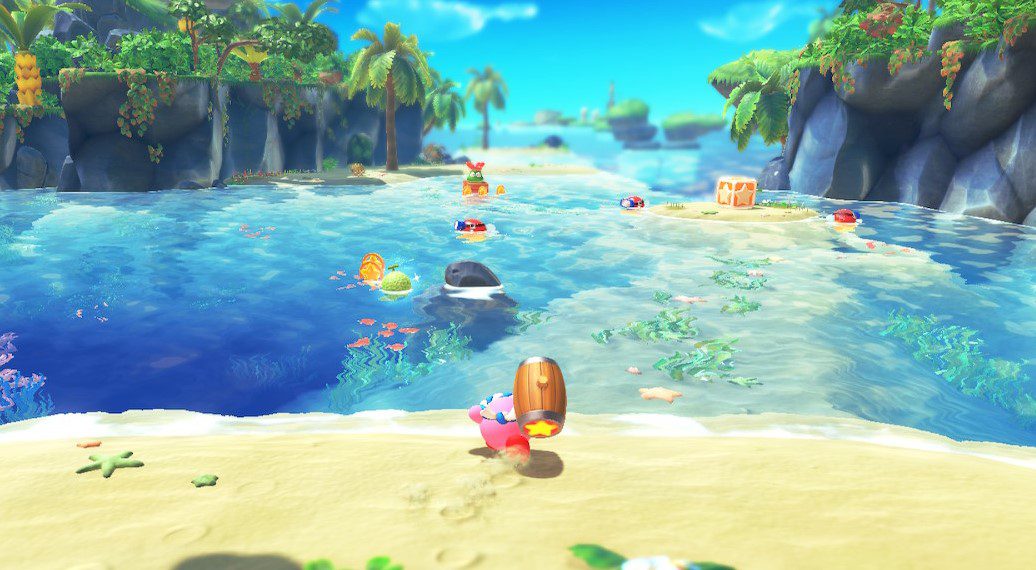
The levels are great, but don’t expect Kirby to be able to get on any of those cliffs.
Another complaint I have with the movement system is the height limit. Even though Kirby can only float for a limited time now, you’ll still hit an invisible barrier pretty quickly when trying to move vertically and this is kind of annoying. The height of the barrier also depends on the height of the ground you originally jumped off of, which means you can sometimes find yourself needing to return to the ground as you traverse across ledges just so you can raise the height “ceiling” to be able to access higher areas. If this game gets a sequel, this would be my #1 priority as to what needs to be improved.
Again, such minor problems don’t ruin the experience by any means. I also haven’t mentioned the abilities in this game, which have been greatly expanded to work in 3D. Every single one of them feels great to control, complete with upgrades that sometimes go as far as to change how you play entirely. The cutter ability, for example, can be upgraded to be thrown rapidly with several projectiles in play at once or upgraded to shoot a comically huge razor blade that deals high damage and bounces off walls. Oh, and those mouthful modes you might have seen in trailers? They control great as well, although you can’t upgrade any of course. The car is probably my favorite, since a couple of levels use it particularly well.
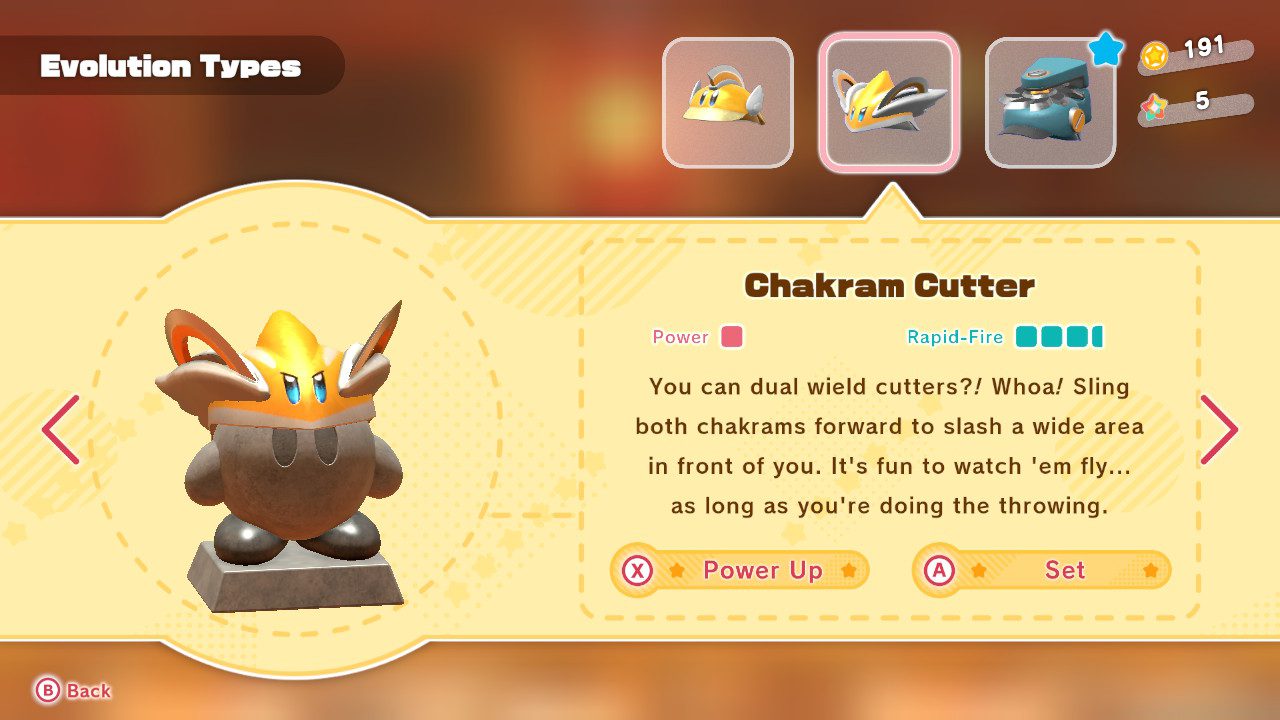
When you’re done crushing enemies as a pink traffic cone however, you’ll want to spend some time checking out Waddle Dee Town. The more precious waddle dees that are saved, the bigger your town will grow, starting from a simple field into a sprawling homebase with shops, minigames and even an arena where you can battle previous bosses and the legendary lone warrior, Meta Knight. This was a fun little distraction as always, and offers a significant challenge in the postgame. Perhaps the best of all, the waddle dees rebuild Kirby’s modest little house where you can display some of the collectibles in the game and take a nap. This, if you somehow can believe it, brings me to the faith aspect of this game.
Kirby is obviously a cute little character – there’s no doubt about it. He’s a pink little puffball with a tiny face and tons of charm. But if you’re a veteran of the series, or at least played through Kirby Star Allies or Kirby Planet Robot, you’ll know he’s been canonically described as “a being with infinite power”. In fact, even in Super Smash Bros. In Ultamite’s story mode, he’s suspiciously the only fighter out of the whole roster who is able to escape Galeem’s destruction.
Yes, this is the same character of whom Nintendo recently created a read-along video storybook for kids.
Aside from cuteness, he has yet another trait that appears contradictory to his power – at least among humans – and that’s a lack of attachment to that power whatsoever.
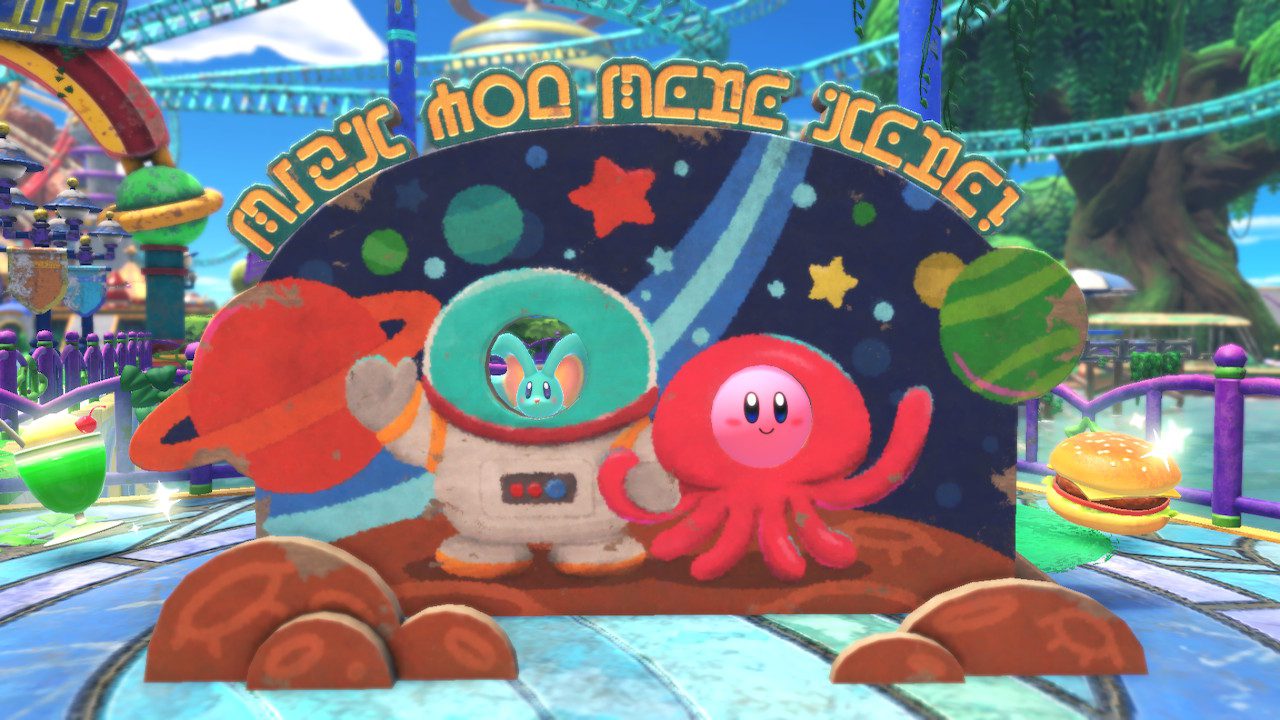
Its-a me, the destroyer of worlds!
At the end of pretty much all his recent games, Kirby conquers monstrously strong enemies, meaning he has unchallenged access to all or at least most of their power. But what does he do, every single time? Instead of placing himself in the throne, he returns to planet popstar and his single-room house to take a nap, eat some food and the like. While you could argue he’s being imprudent leaving his world at risk from the many invasions that take place there, his detachment is extremely respectable. While our little pink friend may be a tad gluttonous sometimes, he makes an otherwise wonderful role model for us when we feel the temptation of worldly things, whether that be power, money, or anything else. Kirby’s a well-deserving protector of his universe, and I wouldn’t want it any other way.
Overall, Kirby’s latest adventure in the forgotten land is a good one. Good music, epic boss fights, and a rewarding progression system all work together to make the best Kirby game I’ve ever played. HAL Laboratories has proven once and for all that they are capable of taking the series 3D, and I’m excited to see where it will be going next.
Scoring: 90%
Graphics: 4.5/5
Music: 4.5/5
Gameplay: 4.5/5
Morality/Parental Warnings
Violence: Kirby and his enemies, as always, use cartoony weapons only so everything’s pretty slapstick here. However, some of the later bosses in particular do get pretty scary for younger children. While the lore of the series does typically get quite dark, things actually stay pretty lighthearted for this game.
Magic/occult: In the postgame, you’ll find yourself collecting pieces of a character’s soul.
